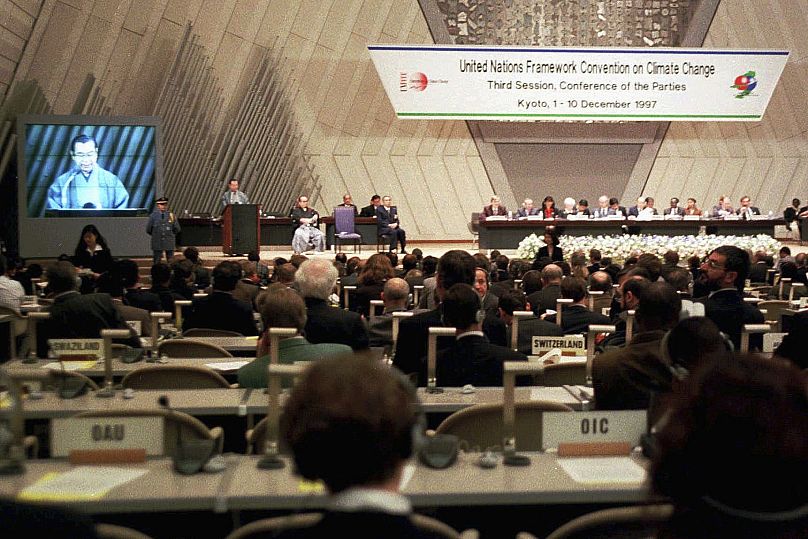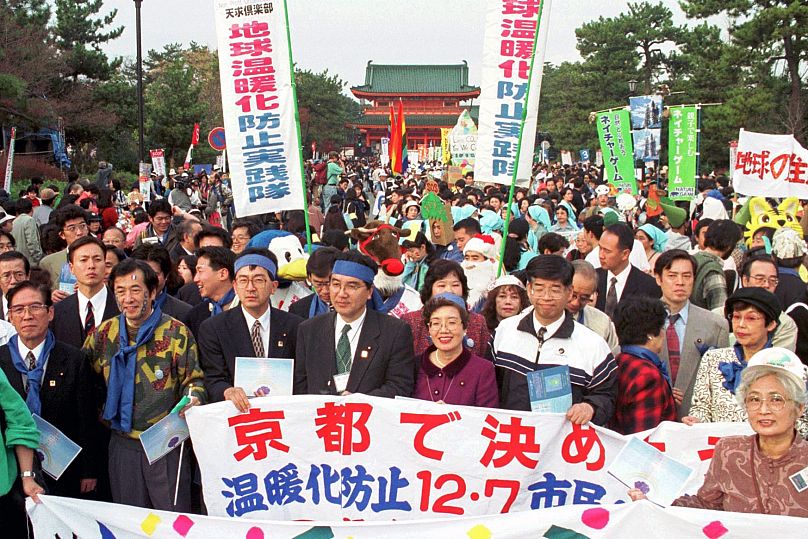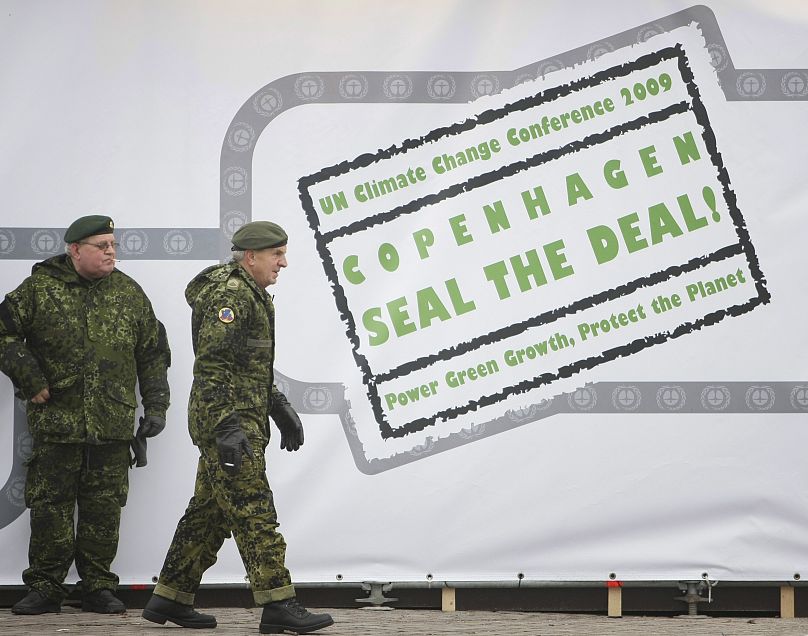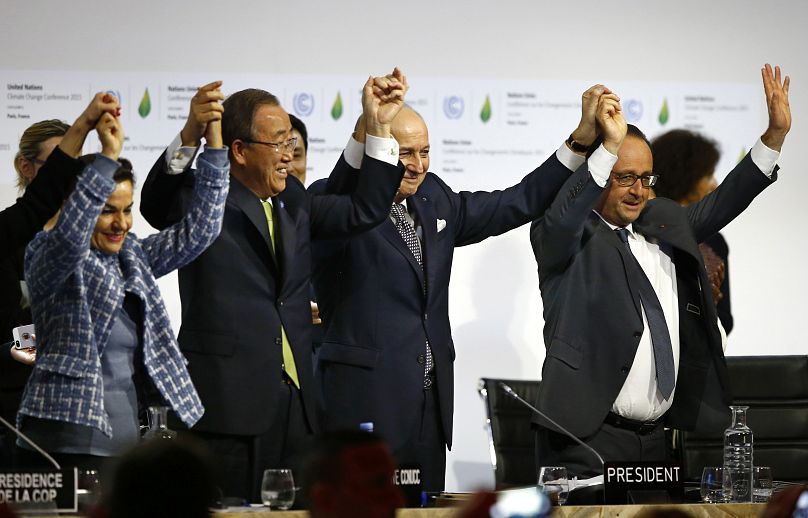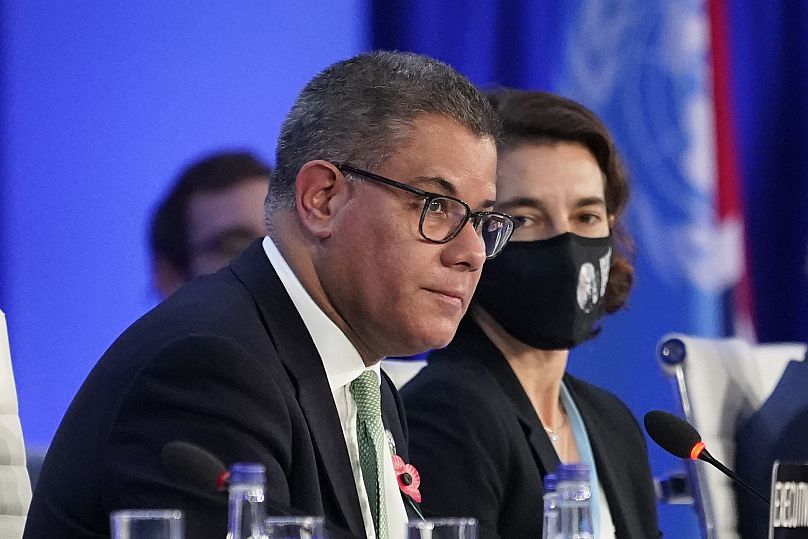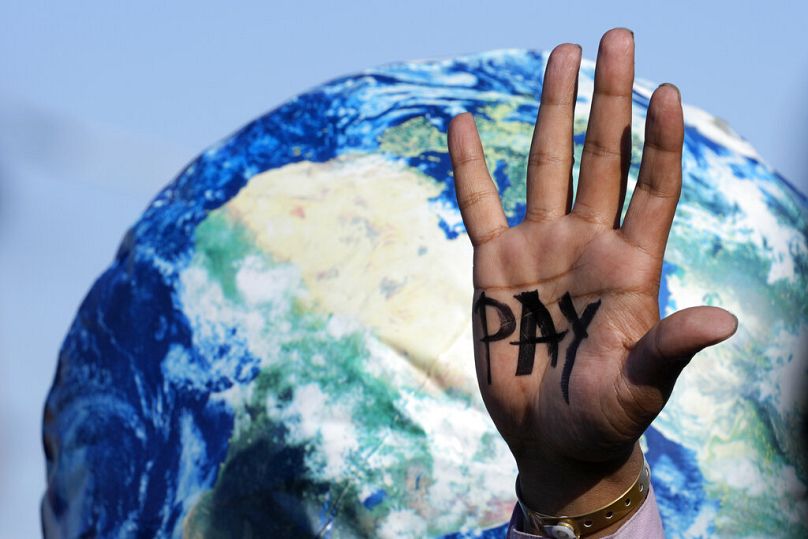Some of the most important decisions from previous climate talks tell us a lot about the chances that the agreement to transition away from fossil fuels will be successful
On Wednesday, United Nations climate negotiators made a "historic" declaration that the world must transition away from oil, gas and coal. It is the first time in nearly 30 years of climate talks that the need to reduce fossil fuels has been included in the final deal.
But will countries keep their word by moving away from planet-warming fossil fuels and toward more green energies like solar and wind?
History may provide some insight into that question. Below are five of the most important decisions to come from climate talks, and what has happened since.
Kyoto Protocol promises emissions cuts in 1997
The third-ever UN climate summit took place in Kyoto, Japan, in 1997 - one of the warmest years recorded in the 20th century.
Known as the Kyoto Protocol, the agreement made there asked 41 high-emitting countries across the world and the European Union to cut their emissions by a little more than 5 per cent compared to 1990 levels.
Emissions cuts can come from many places, from deploying green energies like wind and solar that don't directly produce CO2 to generate power to making things that do, like vehicles with combustible engines, run more cleanly.
Despite the agreement to cut emissions, it was only in 2005 that countries agreed to finally act on the Kyoto Protocol. But the United States and China - the two highest emitters both then and now - didn't join the agreement. The US signed it agreement, but its Congress did not ratify it.
In terms of sticking to the promises made, Kyoto wasn't successful. Emissions have increased dramatically since then. At the time, 1997 was the hottest year on record since pre-industrial times. 1998 broke that record, as have more than a dozen years since then.
This year is virtually certain to be the hottest the world has ever seen.
But Kyoto is still considered a landmark moment in the fight against climate change because it was first time so many countries recognised the problem and pledged to act on it.
Copenhagen's 2009 climate cash pledge
By the time the 2009 conference in Denmark came around, the world was capping off its warmest decade on record - another record which has since been broken.
The summit is widely regarded as a failure for the impasse between developed and developing countries on slashing emissions and whether poorer nations could use fossil fuels to grow their economies.
Still, it did see one major pledge: money for countries to transition to clean energy.
Rich countries promised to channel $100 billion (roughly €91 billion) a year to developing countries for green technologies by 2020. But they didn't reach $100 billion by the start of the 2020s, drawing criticism from developing states and environmentalists alike.
In 2022, the Organisation of Economic Cooperation and Development said rich countries might have finally met and even exceeded this goal. But Oxfam, a group focused on anti-poverty efforts, said it's likely that 70 per cent of the funds were in the form of loans that actually increased the debt crisis in developing countries.
And as climate change worsens, experts say the funds promised are not enough.
Research published by climate economist Nicholas Stern found that developing countries likely need $2 trillion (€1.8 trillion) for climate action every year by 2030.
The 2015 Paris Agreement's 1.5C limit
It wasn't until 2015 that a global pact to fight climate change was adopted by nearly 200 nations. It called on the world to collectively slash greenhouse gases.
But they decided it would be non-binding, so countries that didn't comply couldn't be sanctioned.
The Paris Agreement is widely considered the single biggest UN achievement in efforts to confront climate change. It was agreed upon eight years ago to a standing ovation at the plenary. Nations agreed to keep warming "well below" 2 degrees Celsius since pre-industrial times, and ideally no higher than 1.5 degrees Celsius.
Paris' legacy continues, with the goal of limiting warming to 1.5 degrees still central to climate discussions. Scientists agree that the 1.5 threshold needs to be upheld because every tenth of a degree of warming brings even more disastrous consequences, in the form of extreme weather events, for an already hot planet.
The world hasn't exceeded the limit set in the Paris Agreement - it has warmed around 1.1 or 1.2 degrees Celsius since the early 1800s - but is currently well on its way there, unless drastic emissions cuts are made quickly.
Glasgow's 2021 pledge to 'phase down' coal
Six years after Paris, global warming had hit such a critical point that negotiators were looking to recommit to the goal of capping warming to the levels agreed in 2015.
Average temperatures were already 1.1 degrees Celsius higher than pre-industrial times.
The Glasgow summit was postponed until 2021 as the world was emerging from the COVID-19 pandemic. It included mass protests headlined by climate activist Greta Thunberg, who helped lead a global movement of youth activists to demand more action from leaders.
After last-minute disagreements over the language of the final document, countries agreed to "phase-down" coal, less strong than the original idea of a "phase-out." India and China, two heavily coal-reliant emerging economies, pushed to water the language down.
Alok Sharma, COP26 President, fought back tears as he accepted this last-minute motion to weaken the language of the Glasgow Climate Pact.
The burning of coal is responsible for more emissions than any other fossil fuel, approximately 40 per cent of global carbon dioxide emissions. The burning of oil and gas are also major sources of emissions too.
So far, countries have failed to deliver on the Glasgow deal. Emissions from coal have slightly increased and major coal-using countries have yet to begin moving away from the dirtiest of fossil fuels.
India is a case in point. It is dependent on coal for more than 70 per cent of power generation and plans a major expansion of coal-based power generation capacity over the next 16 months.
The Sharm el-Sheikh loss and damage fund agreement
At last year's climate talks in the Egyptian resort town of Sharm el-Sheikh, countries agreed for the first time to create a fund to help poorer nations recover from the impacts of climate change.
It came just a few months after devastating flooding in Pakistan that killed nearly 2,000 people and caused losses of over $3.2 trillion (€2.9 trillion). COP27 delegates decided to set up the loss and damage fund so that destroyed homes, flooded land and lost income from crops damaged by climate change would compensated.
After disagreements about what the fund should look like, it was formally created on the first day of this year's talks in Dubai.
More than $700 million (around €640 million) has already been pledged. But the pledges - and the amounts the countries choose to commit - are voluntary. A fact reflected in the comparatively small contribution pledged by the US - historically one of the world's biggest emitters.
Climate experts also say the pledges are just a fraction of the billions needed, as climate-driven weather extremes such as cyclones, rising sea levels, floods and droughts are increasing as temperatures rise.












